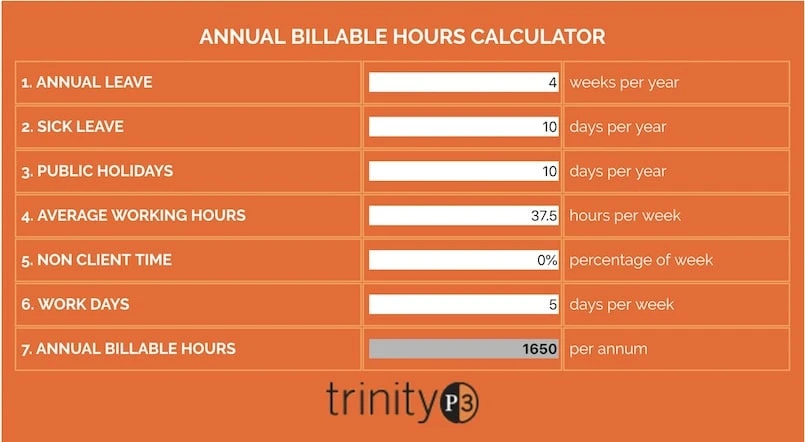Since this post was last updated at the end of 2018, the world has gone through a significant upheaval in how and where work is done. Whilst the instances of advertising agency staff working long and largely unpaid overtime hours will always, to some degree, be an issue, this has predominantly been replaced by agencies grappling with employees demanding more flexible working arrangements, having proven during the COVID-19 induced lockdowns that productivity needn’t be constrained by the “traditional” 9 to 5 Monday to Friday work week.
So how might this impact advertisers that remunerate their agencies via resourced-based or FTE (full-time equivalent) models?
Take a year = 52 weeks.
In Australia, 4 weeks of that year are for annual leave (so no billing there)
Two weeks a year, or more precisely ten working days, for sick leave (heaven forbid)
A week of public holidays (go on count them up, in most states, there is a little more than five)
Suddenly we are down to 45 weeks of work a year.
In an average week, how much of the time is it reasonable to bill? 30 hours? 40 hours? 50 hours? 60 hours?
Remember, this is not how much time the person is at work, it is how much time of that work time could they be productive and active on your business. That is removing all the internal non-billable meetings, , general non-business discussion, internal administration (like timesheets etc., meal/toilet/coffee breaks, and the odd bit of “personal admin”; i.e., how much truly billable, productive time is left?
Well, at thirty-six hours and forty minutes, this equates to 1650 hours a year, which is reasonably well accepted. Some people use 1600.
The lowest we have seen is 1,200 a year, and the highest is 2,080.
To make this even easier, we have created a calculator for working out billable hours per year and more here.
All fairly straightforward, but how to reconcile this with the prevalence of the 9-day fortnight? Or the 4-day week? Or the now ubiquitous working from home in its various guises? One Finance Director friend has told me their agency is trialling a “fully flexible” arrangement with no prescribed office hours, and employees can set their hours within the parameters of client, team, and personal/family needs.
There are, of course, exceptions, but generally, these arrangements are designed to have still the employee work “full time”, just not in the traditional manner. Some studies into more flexible working show reduced employee procrastination, personal admin and other productivity killers. If we accept this, nothing changes regarding the annual billable hour calculation – 1,650 hours per year (or thereabouts) should still represent the maximum number of hours an advertiser can expect to be billed per FTE per annum.
But why is this important?
Billable hours need to be calculated and managed effectively for two very important reasons.
The first is ensuring that the advertiser gets what they pay for in their agency retainer.
If the agency uses 1600 hours and the end-of-year review says the person did 1870 hours or 13% over the FTE does this mean 1.13 FTE should be charged? No, it just means that the person involved did not take their annual leave or sick leave and kept working at the same billable rate 51 weeks of the year.
Or is the retainer based on a group Account Director at 100% or 1650 and 3060 hours a year? Does this mean you need almost two Group Account Directors on your business? No, it is more likely that rather than keeping a real timesheet, they recorded 12 hours a day, five days a week, for 51 weeks. But the work was done, and the GAD did not get paid overtime, so it cost the agency no more. Besides, the problem, in this case, was not resourcing; it was a poor timesheet process.
By understanding how FTEs are based on billable hours, you can see how to interpret the agencies’ timesheets and resource utilisation reports.
The second is to ensure that the agency provides the required resourcing level. This report showed that agencies regularly overworked their staff, particularly in Asia. The phenomenal unpaid overtime hours worked by some agency staff members led to the death of few and ill health for many.
The agency fee model rewarded the agency for having their resources work these ridiculous hours of unpaid overtime, which the agency then billed to the advertiser client.
If you are still confused by how to calculate and use the billable hours per year, perhaps this Golden Minute video “How many billable hours in a year?” will help you. It will take just a minute to watch, but it could make a difference to your whole year ahead.
It’s still early days, but many signs point to more flexible working being a benefit to the agency, the agency’s employees, and ultimately the advertiser. We think the likes of Henry Ford, a pioneer of the 5-day work week in the 1920s, who understood that working more didn’t necessarily mean working better, would surely approve.






2 thoughts on “How many billable hours are there in a year?”
52 weeks per year. 45 hours per week.. 52*45=2340
Kevin, I thought slavery was outlawed in most civilised countries? What about annual leave, public holidays and sick leave? Or do you own your own business, in which case it should be 60 hours a week.
Comments are closed.